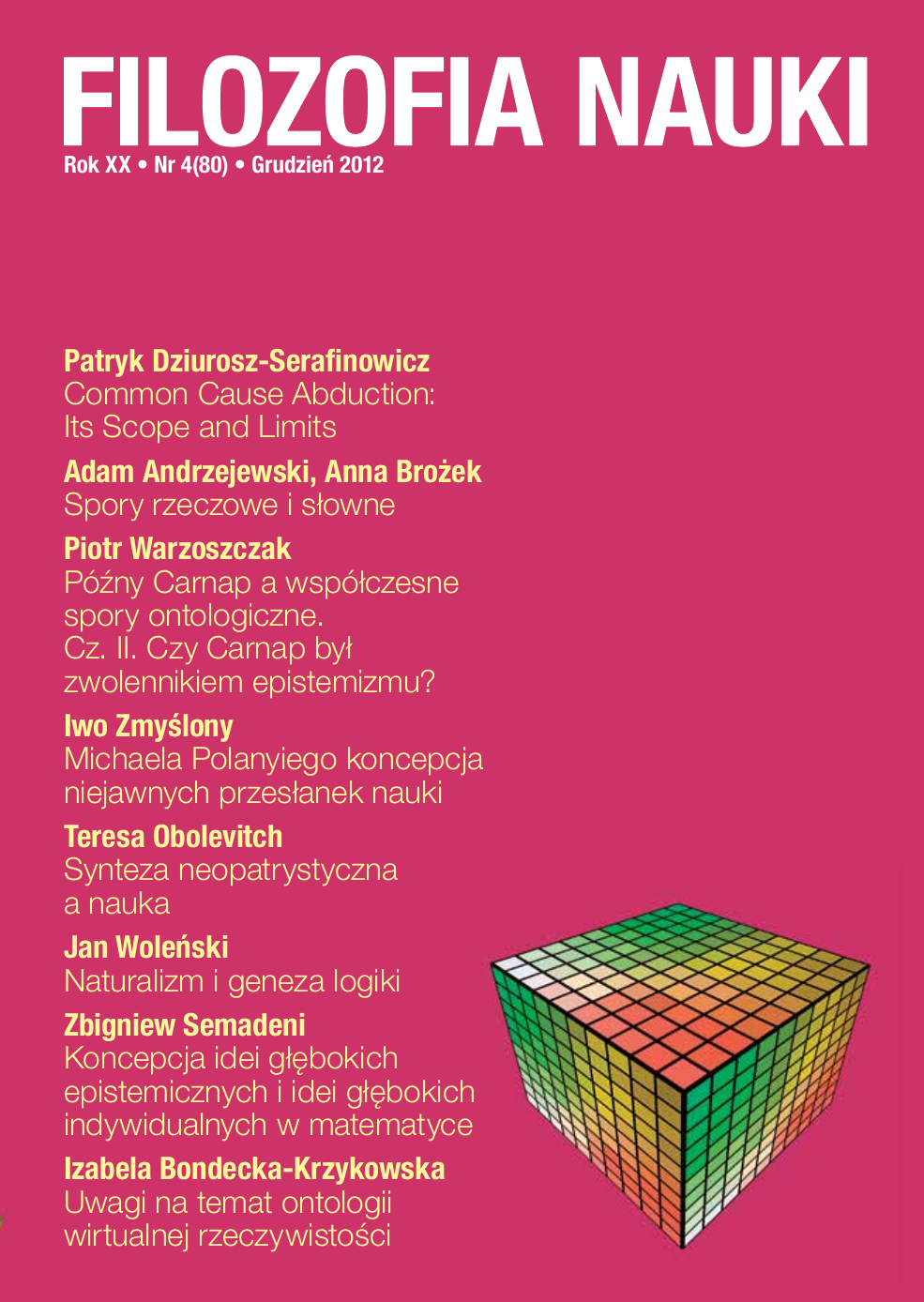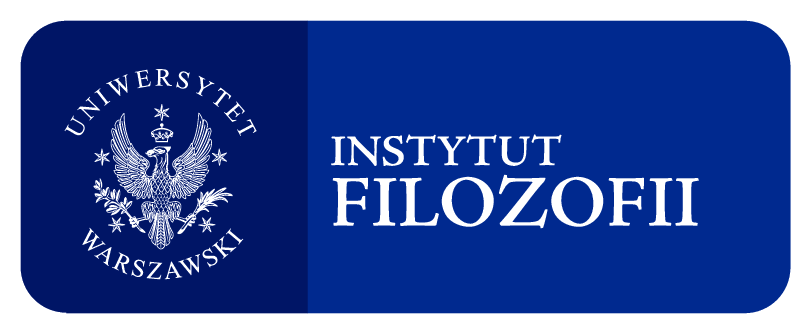Koncepcja idei głębokich epistemicznych i idei głębokich indywidualnych w matematyce
Słowa kluczowe:
mathematics, epistemic deep ideas, individual deep ideasAbstrakt
The aim of this paper is to present a conception of the triple nature of mathematics. It is argued that the nature of mathematics is best served by distinguishing deep ideas (of concepts or propositions), their surface representations (signs which can be perceived by senses) and their formal models (in axiomatic theories). For instance, the concept „number π” has several different models in set theory (those based on Dedekind cuts and on Cantor's equivalence classes of Cauchy sequences) and yet all working mathematicians in the world have the same object π in mind. They have a common deep idea of π. Generally, the deep idea of a concept X is a well-formed mental construction of X which controls reasoning. It manifests itself in a characteristic, definite feeling of purpose, in firm certainty of the meaning of X in various contexts, and in robustness of understanding of X in cases of typical cognitive conflicts. Epistemic deep ideas are intersubjective and have been formed in phylogeny whereas individual deep ideas (or deep intuitions) are formed in ontogeny. In certain situations a deep idea may be described in terms of intuition, of meaning or sense, or of understanding, but none of these terms can provide a satisfactory description fitting all cases.
Deep ideas of certain concepts are identified in authoritative texts where the actual use of the concept formally, although unnoticeably, conflicts with the declared definition. Specific examples, discussed in the paper, include: vertex of a straight angle; switching the meaning of fraction from a single number to a pair numeratordenominator; identifying vector with point and with translation. A peculiar anomaly is known in axiomatic set theory. The standard definitions are: an ordered pair is (a1,a2)={{a1}, {a1,a2}}; a function f : X›Y is a set of pairs; a sequence (a1,…,an) is a function on the set {1,…,n}; an ordered pair is the same as a two-term sequence (a1,a2), which is different from {{a1}, {a1,a2}}. This is an unavoidable definitional loop; however, it does not affect reasoning, for mathematicians use the deep idea of a pair, and not the definition.
An example is given to show that two geometric phrases with analogous surface grammatical structures (with adjectives linked by „and”) may be interpreted differently (as the union or the intersection of the relevant sets), depending on their deep linguistic structures.
The transitional mechanisms in the history of science and psychological development described by J. Piaget and R. Garcia, in particular those leading from the intra level (object analysis), to the inter level (analysing relations or transformations), and then to the trans level (building structures), may be used to outline the formation processes of epistemic deep ideas and those of individual ones; in each progression what gets surpassed is always integrated with the new (transcending) structure. Metaphorically, the deep idea of a concept is built on layers of earlier constructions and meanings.















 Filozofia Nauki | ISSN 1230-6894 | e-ISSN 2657-5868
Filozofia Nauki | ISSN 1230-6894 | e-ISSN 2657-5868